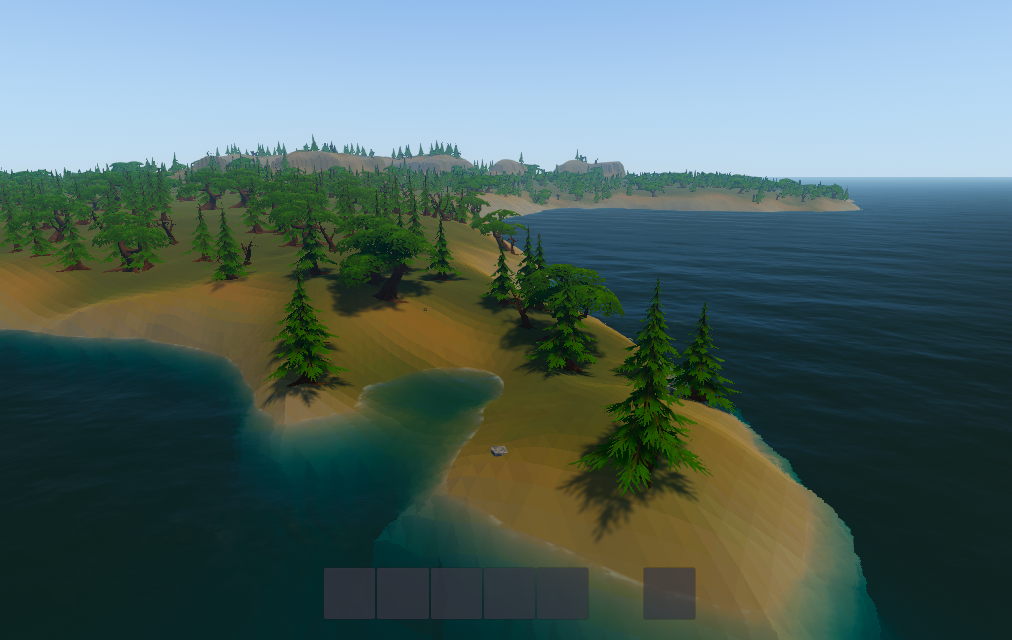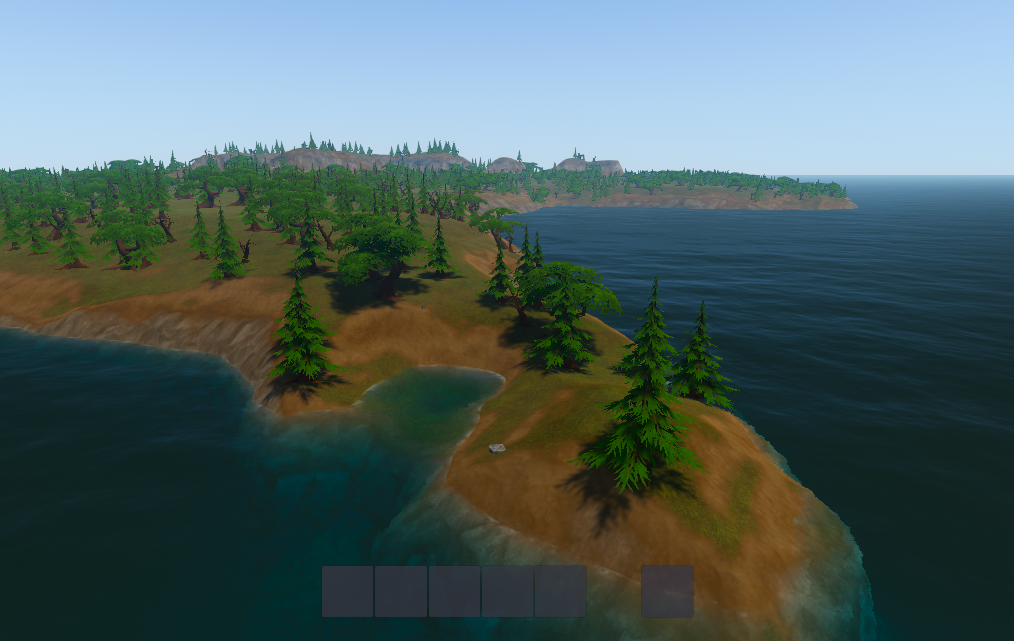So for a number of reasons I'd really like to go with a low poly/vertex lit terrain for my game. But I don't necessarily want that everywhere. Like characters I definitely do not. Water not either. The following screens show my test scene with low poly and normal surface shaded heightmap terrain. Trees are purely placeholders for functionality.
Low poly terrain has a number of significant advantages to this specific game. It will be far less time intensive to create the number and type of terrains needed, texturing and lighting becomes much simpler. I just don't know enough to know if it can be pulled off. Mixing the low poly terrain look with stylized but surface shaded assets. Mainly characters and water are where I simply can't go low poly. Or rather I strongly believe at that point it wouldn't be a good trade off for other design reasons.






